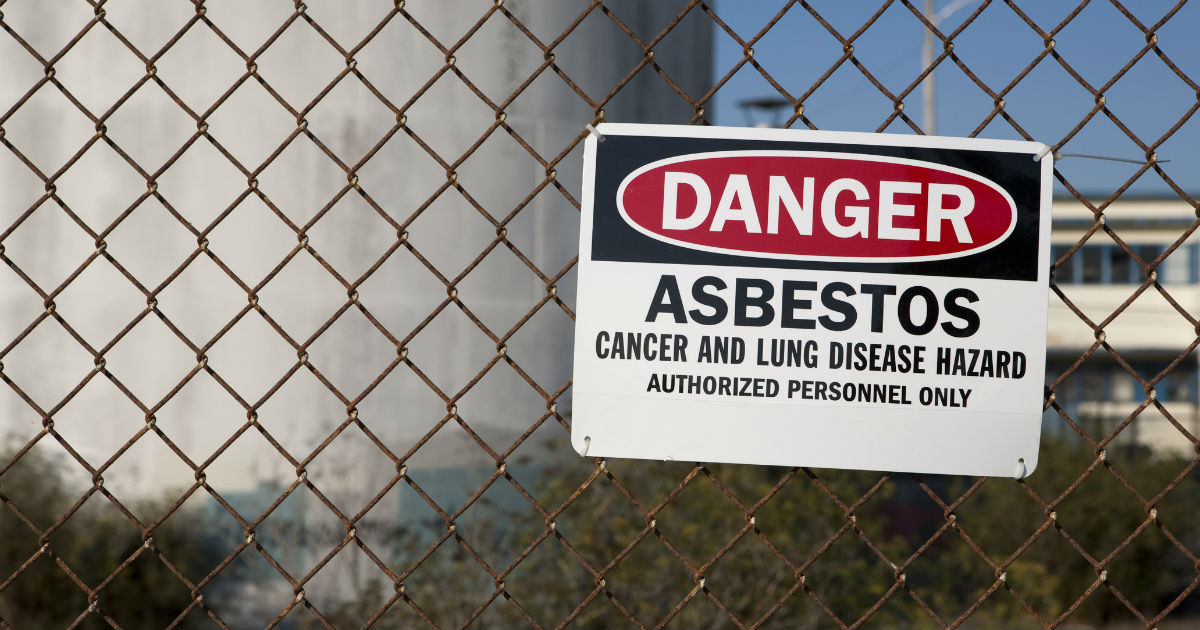
Considering the abundance, versatility and durability of asbestos, it’s no wonder this naturally occurring mineral has been used around the world for thousands of years. Asbestos fibers are heat-resistant, fireproof and flexible and can be woven into cloth. Archeologists have found ancient pots made of asbestos. Charlemagne was believed to own a tablecloth made of the material. The Roman emperor would boast to dinner guests of his supernatural powers while tossing it into a fire, where it would fail to burn. More recently, asbestos was commonly used in building materials, insulation, brakes, sound absorption and ship-building materials. We now know that asbestos also has a major flaw: It may cause deadly diseases, including lung cancer and mesothelioma.
The U.S. Department of Health and Human Services, the U.S. Environmental Protection Agency (EPA) and the International Agency for Research on Cancer (IARC) have classified asbestos as a carcinogen. More than 60 countries, including all of Europe, Australia, Israel and Japan, have banned use of the material. The United States continues to allow asbestos to be used in a variety of industries. For people who work in certain professions, such as firefighters, shipbuilders and auto mechanics, occupational asbestos exposure is particularly concerning.
First-responders, especially firefighters, are at a particular risk of repeated exposure due to the nature of their work. In November, The Pittsburgh Post-Gazette reported that 9,500 of 76,000 9/11 first-responders have been diagnosed with cancers that can result from exposure to toxic substances like those at Ground Zero.” Approximately 2,000 tons of asbsestos were used to build the World Trade Center. Family members of first responders and others who are exposed to asbestos may also be at risk “because the fibers can be carried home on the workers’ clothing, and can then be inhaled by others in the household,” says the American Cancer Society (ACS). Since mesothelioma and lung cancer have such long latency periods, experts anticipate a wave of these diseases in the coming decades. According to the National Cancer Institute (NCI), asbestos-related cancers are often at an advanced stage when diagnosed.
How does asbestos cause cancer?
Most people are exposed to asbestos by inhaling fibers circulating in the air as dust particles, according to the EPA. Tiny asbestos fibers may cling to mucus in the throat, the trachea or the bronchi, the airways that lead into the lungs. The fibers may become trapped in the small airways in the lungs or the lining of the lung and chest wall and begin to kill cells there. According to researchers at the University of Hawaii, the dying and dead cells release a protein called HMGB1 that may cause inflammation and promote tumor growth. Patients exposed to asbestos have elevated levels of HMGB1, researchers say. The health risks from exposure may depend on how much asbestos is inhaled, how long someone is exposed, as well as the size, shape and chemical makeup of the asbestos fibers, among other factors.
What is mesothelioma?
Mesothelioma is a rare cancer that typically starts in the mesothelium, the thin layer of tissue that lines most internal organs. The cancer cells may spread throughout the body. Mesothelioma is notoriously challenging to treat “because it typically does not grow as a single tumor mass” and “tends to spread along nearby surfaces, nerves, and blood vessels,” making it difficult to remove all the cancer with surgery and/or radiation therapy, according to the ACS. The ACS recommends getting a second opinion from a doctor who specializes in treating mesothelioma, since many doctors have very little experience with the disease.
Asbestos and lung cancer
Workers who have been exposed to asbestos for an extended period are at an increased risk for developing lung cancer. Smokers and those with a family history of lung cancer are at an even greater risk. Non-small cell lung cancers make up about 80 percent of all lung cancers, with about 4 percent attributed to asbestos exposure, according to the American Lung Association.
Asbestos may also increase the risk of cancers of the larynx, ovaries, throat, stomach, colon and rectum, according to the ACS.
If you’ve been exposed to asbestos or think you have, the ACS recommends assessing your level of exposure. If you think you may have been exposed to high levels of asbestos, it’s important to take some steps, including:
- Quit smoking. Smoking combined with asbestos exposure significantly increases your risk of lung cancer.
- Talk to your doctor. Ask about about regular health checkups. Your doctor may recommend patients exposed to asbestos get periodic CT scans and/or chest x-rays.
- Look out for symptoms. Talk to your doctor if you have any of the following symptoms:
- Persistent or worsening cough, with or without blood
- Chest tightness or pain
- Shortness of breath
- Difficulty swallowing
- Unintended weight loss
